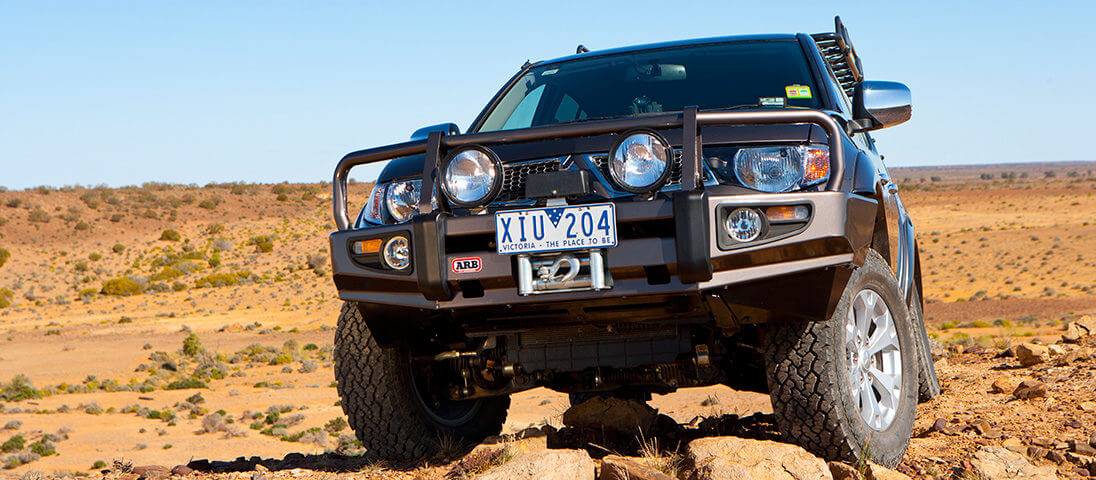Subscribe to ARB
Subscribe to ARB to receive your regular 4x4 CULTURE magazine, exclusive ARB promotional news and new product release information.
28th July, 2014

Hi ARB,
Firstly thanks Greg, Rebecca and Mark for their answers to the letters in the latest edition. You guys really know your stuff.
I have a 2010 MN Triton and have been researching lift kits. Most conversations I have with other 4WDing enthusiasts will inevitably include the question ‘Are ya gonna get a lift kit, mate?’
Well, yes, eventually I will, but I’m more confused now than when I started researching because every manufacturer and retailer (and 4WD owner with one) has reasons why theirs is the best.
It seems to me that most punters I talk to think extra height is the most important thing, but surely vehicle stability and handling on the road should also be a consideration if the lift kit is for my daily drive. Yes, I want as much extra clearance as I can get but I also want my vehicle to be safe and comfortable for my family in all driving conditions.
Should tyre and rim size also be taken into consideration? What about drive shaft lengths and suspension travel? Are these factors important to research before making a decision?
In your expert opinion, what are the pros, cons and considerations that every 4WD owner should weigh up before purchasing a lift kit?
I would really appreciate your help with navigating through the marketing speak so that I can get the best possible solution for my vehicle.
Cheers,
– Chris
Hi Chris,
Thanks for your letter regarding your search for the most appropriate suspension upgrade. It can be a bit of a minefield with many factors to consider and we often get asked why people should upgrade their suspension.
Generally, the original equipment suspension set up is a compromise designed to suit all weight loadings – from no weight to maximum GVM – and you soon discover that one spring rate won’t cater for all of the varying loads you may want to carry as a 4WD owner.
By fitting an aftermarket system, you are able to tailor your suspension to your requirements, particularly in regard to which spring rate best suits the weight you are carrying on and in your 4WD. It is also important that your shock absorbers, springs and other components are integrated to ensure not only the best performance on the highway but also enhanced ride when you hit the rough stuff.
Old Man Emu’s primary consideration when engineering a suspension solution is ride quality, handling, safety and load carrying capabilities. As a result of the suspension upgrade, you also receive the benefits of increased ride height, which offers the benefits of improved approach, departure and ramp over angle, thereby helping you clear more objects when you’re out off roading.
However, ride height can have its limits and these limitations can vary from vehicle to vehicle. It’s important to take into consideration several factors when lifting the height of your vehicle.
Increased suspension ride height can cause caster and camber angles to fall outside the manufacturer’s specifications, which results in a rougher ride. This can be overcome by use of a caster correction kit.
Raising a vehicle’s ride height can also alter the driveline angle and change the relationship of the flanges at the differential and transfer case. In some vehicles, this cannot be overcome and driveline vibration becomes the limiting factor to the amount of ride height that can be increased.
And any time you change your suspension or ride height, it is recommended that you do a wheel alignment.
Other factors to consider are ball joint travel, brake lines, ABS wires and your local regulations regarding how much lift is allowed. It’s also important to take into account the amount of testing the suspension upgrade has undergone, what warranty period is offered and the level of after sales service and support you’ll likely receive.
I hope this has helped clarify the issues surrounding lift kits.
– Mark de Prinse, Manager
Old Man Emu
Subscribe to ARB to receive your regular 4x4 CULTURE magazine, exclusive ARB promotional news and new product release information.